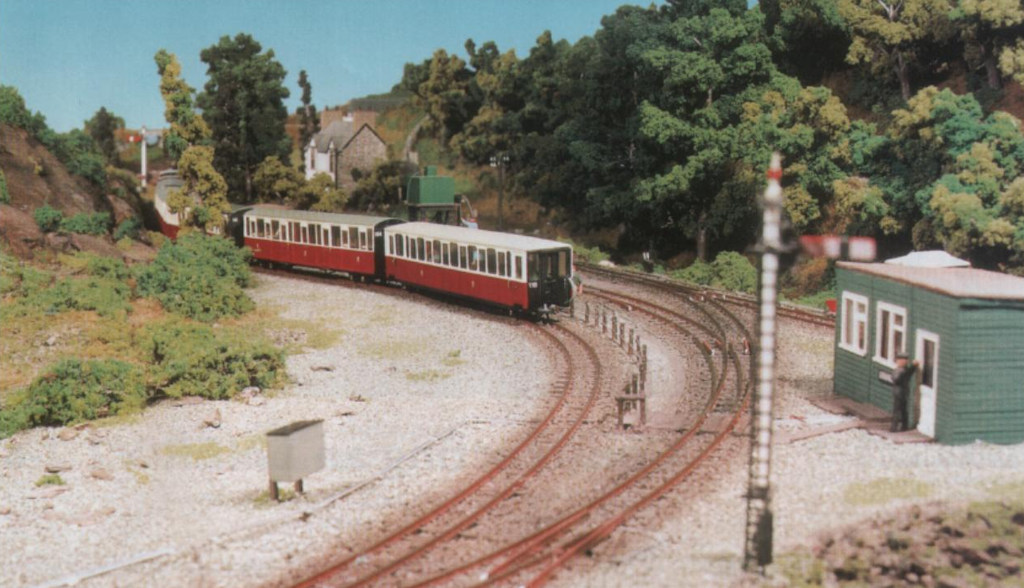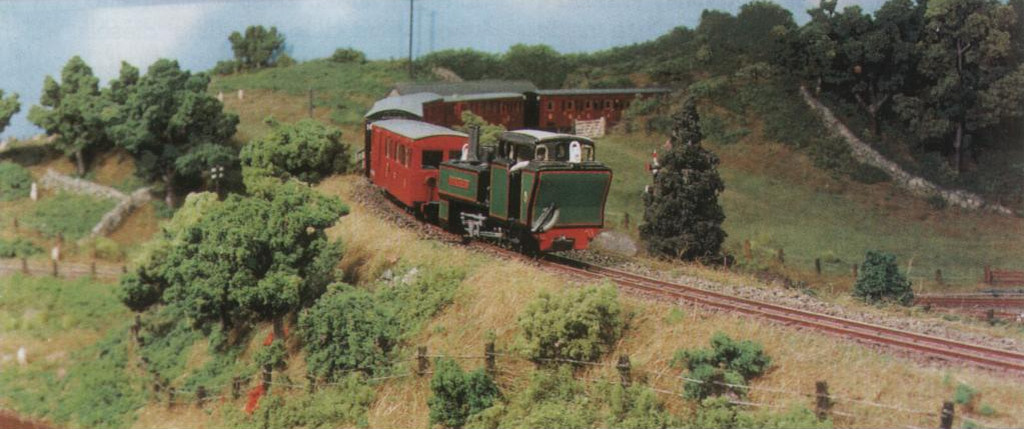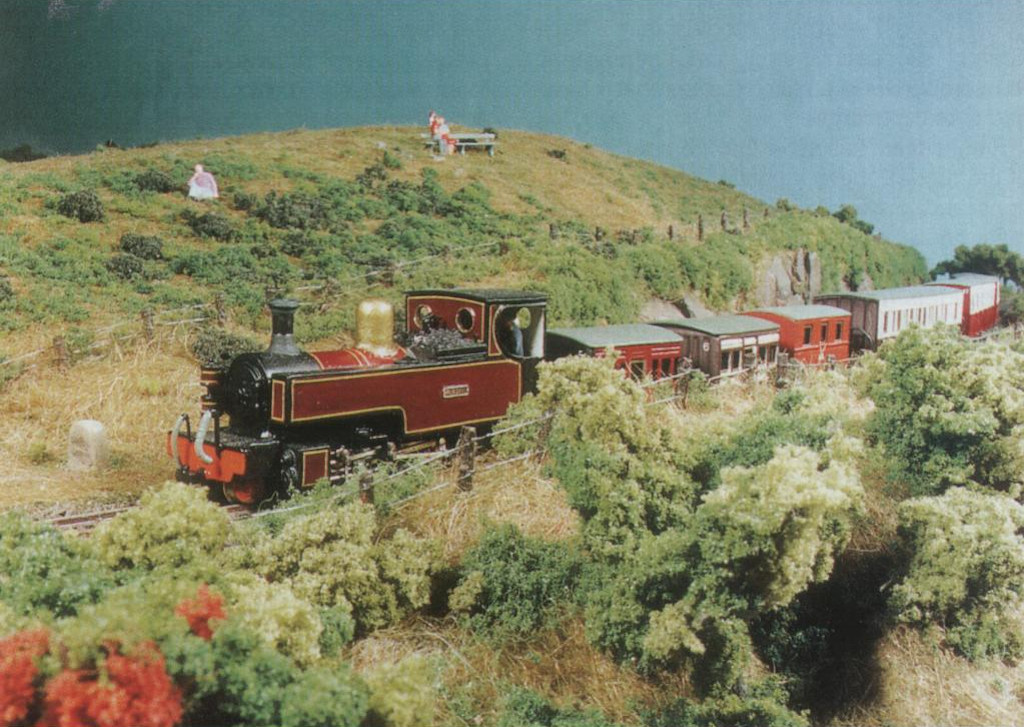
The start of the Llyn Ystradau deviation at the north end of Dduallt station. The original 1863 route continued straight ahead behind the signal cabin.

The start of the Llyn Ystradau deviation at the north end of Dduallt station. The
original 1863 route continued straight ahead behind the signal cabin.

Rebuilt Mountaineer brings the C set round the spiral with a down service to Porthmadog.
All the locomotives are kits of varying parentage with some minor modification and improvements; heavily kitbashed in the case of Earl of Merioneth, Linda, Blanche and diesel Harlech Castle have had their chassis adapted with the addition of outside frames, and the Langley Double Fairlies are being replaced with the new Backwoods brass kits. The Welsh Highland’s Russell also appears by courtesy of our over active stage of our active imaginations, and the superb chassis was built up from an old 009 Society kit by Mick Moignard.
Just as the construction of the layout there is no substitute for careful adapting of the N gauge chassis utilized by most 009 kits, and more importantly for a very large amount of running in. This is not too much of a problem on Dduallt where, in addition to the long run, the locomotives are worked hard on the gradients, whereas on a smaller layout with smaller trains a prolonged running in will inevitably pay good dividends with improved performance. In our experience, with attention paid to the trackwork and with locomotives well maintained, there is no reason why 009 should not operate as well as, if not better, than the average 00 ready to run models.
Unfortunately the 009 modeller is not as well served for rolling stock kits, particularly carriages, as for prototype locomotives. We’ve used all the available FR brass, whitemetal and plastic coach kits on the market currently, but in order to represent the modern FR properly we’ve had to scratch build the Railway’s fleet of modern corridor vehicles. With the gradients involved on Dduallt however, using primarily lightweight scratch built plastic models is a considerable advantage and allows us to run longer, and therefore more accurate trains than we could with more brass kits for example.
Here again I employ styrene strip using a ladder technique first demonstrated to me by Mick Moignard. 15 or 20 thou styrene strips are glued against a styrene panel representing the lower body side of a particular vehicle, chopped for height, and then a further strip is attached above representing the cant rail. This is all carried out flush on a sheet of glass with a drawing underneath, and results in a flimsy basic carriage side. All body detail is then added above, again using strips, and results in a thin, strong effective carriage body kit. I have successfully adapted this basic technique to model 14 of the Festiniog’s modern corridor vehicles as well as straight-sided vintage coaches and vans. It is supremely simple and adaptable and, I hope will form the basis of a future article in RAILWAY MODELLER. This technique has allowed us to capture the essence of the modern Festiniog and its simplicity has meant that out large fleet of scratch built carriages matches unobtrusively with our kit built stock and the hand made vehicles do not necessarily stand out nor detract from the overall effect of the layout.
Dduallt has been our first attempt at 009 modelling and also out first attempts at scratch building, brass kits, working semaphores, chassis building and many other techniques. It therefore never ceases to amaze us that the layout should have received the awards it has in the past three years. The greatest satisfaction however comes when those who have worked on the Festiniog, particularly Deviationists, pass comment on its resemblance to the real Dduallt.

Modeller's licence vs the law of physics. The Welsh Highland's Russell would never fit
through Garnedd Tunnel in reality but it's an irresistible temptation when paired with
the vintage train.
Previous Page
Photographs courtesy of Railway Modeller